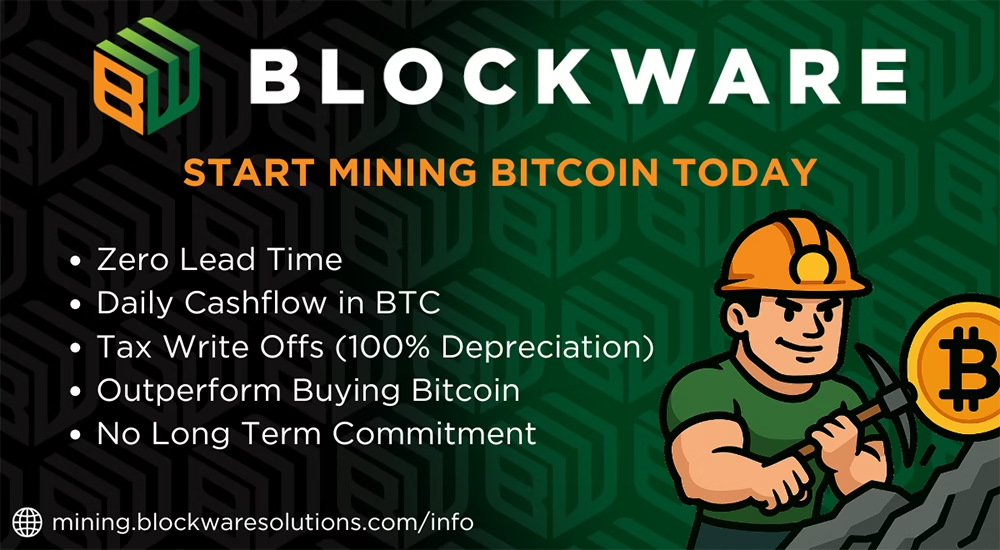
Crypto mining is drawing fresh attention as more people look for digital gold in 2025. This isn’t just for tech wizards anymore. Even beginners are stepping in because block rewards dropped by 46% after the 2024 halving event and profits now hide behind every decision. The surprise is that energy costs have shot up to 67% of block rewards, making the old easy-money stories totally outdated. So the real opportunity and risk this year isn’t about buying newer hardware but about understanding the new numbers and shifting strategies that will decide who actually makes money now.
| Takeaway | Explanation |
|---|---|
| Understand mining basics first | Familiarize yourself with how cryptocurrency mining works and its importance for blockchain integrity and security. |
| Choose optimal hardware and software | Selecting the right mining equipment and software is crucial for maximizing efficiency and profitability within cryptocurrency mining. |
| Calculate profits and manage risks | Develop a financial model that includes energy costs, hardware expenses, and market fluctuations to ensure profitable mining operations. |
| Stay updated with regulations | Keep informed about local and international laws affecting mining to navigate potential legal challenges and ensure compliance. |
| Embrace continuous learning and adaptation | The mining landscape is rapidly evolving, requiring ongoing education and flexibility to adjust to new technologies and market trends. |
Cryptocurrency mining represents a fundamental process that powers blockchain networks and enables the creation and verification of digital transactions. At its core, mining is far more than just generating new cryptocurrencies it is a critical mechanism that maintains the integrity and security of decentralized financial systems.
Cryptocurrency mining involves powerful computers solving complex mathematical problems to validate and record transactions on a blockchain network. According to Britannica, this process serves three primary functions: creating new tokens, processing transactions, and maintaining network security. Miners use specialized computer hardware to compete in solving cryptographic puzzles, with the first computer to solve the puzzle receiving the right to add a new block to the blockchain and earn cryptocurrency as a reward.
The computational process requires significant energy and advanced hardware. Kaspersky explains that miners essentially act as auditors, ensuring no single entity can manipulate transaction records. Each verified transaction gets added to the blockchain ledger, creating a transparent and immutable record of all cryptocurrency exchanges.
Beyond generating new digital currencies, mining provides several critical advantages to blockchain ecosystems. First, it creates a decentralized verification system that eliminates the need for central financial authorities. This means no single government or institution controls transaction validation, promoting financial democratization. Second, mining incentivizes network participants through cryptocurrency rewards, which encourages more individuals and organizations to support blockchain infrastructure.
Mining also contributes to network security by making it economically challenging for malicious actors to manipulate blockchain records. The computational power required to alter blockchain transactions makes such attempts prohibitively expensive and complex. This self-regulating mechanism ensures the integrity of cryptocurrency networks.
While mining offers significant benefits, it also presents challenges. Science for Georgia highlights the substantial energy consumption associated with mining operations. As computational requirements increase, so do the environmental concerns related to electricity usage. Some blockchain networks are exploring more energy-efficient consensus mechanisms to address these challenges.
For those interested in diving deeper into blockchain technologies, check out our comprehensive mining research to understand the evolving landscape of cryptocurrency mining. Understanding these fundamental principles is crucial for anyone considering entering the dynamic world of cryptocurrency mining.
The future of mining continues to evolve, with technological advancements promising more efficient and sustainable approaches to maintaining blockchain networks. As digital currencies become increasingly mainstream, mining will remain a critical component of this transformative financial technology.
Selecting the appropriate hardware and software is a critical decision that can significantly impact your cryptocurrency mining success. The right combination determines mining efficiency, potential profitability, and overall performance in the competitive blockchain ecosystem.
Mining hardware represents the foundation of your cryptocurrency mining operation. According to government capital research, miners must carefully evaluate several key components when building their mining setup. Graphics Processing Units (GPUs) and Application-Specific Integrated Circuits (ASICs) are the two primary hardware options, each with distinct advantages.
GPUs offer flexibility across multiple cryptocurrencies and can be repurposed for other computational tasks. They are particularly effective for mining altcoins and provide better adaptability. ASICs, conversely, are purpose-built for specific cryptocurrency mining algorithms, delivering superior hash rates and energy efficiency for targeted cryptocurrencies like Bitcoin.
Key hardware considerations include hash rate (computational power), energy consumption, initial investment cost, and potential long-term profitability. Miners should calculate electricity expenses, cooling requirements, and potential mining rewards to determine the most suitable hardware configuration.
Comprehensive research from government capital highlights the importance of selecting appropriate mining software and operating systems. For beginners, Windows 10 offers broad hardware compatibility and user-friendly interfaces. Advanced miners might prefer Linux-based mining operating systems like HiveOS and RaveOS, which provide specialized optimization, remote management capabilities, and enhanced resource efficiency.
Popular mining software options include CGMiner, NiceHash Miner, Awesome Miner, and Cudo Miner. Each platform offers unique features tailored to different mining strategies and hardware configurations. Factors to consider include ease of use, hardware compatibility, fee structures, and support for multiple cryptocurrencies.

Successful cryptocurrency mining requires continuous performance monitoring and strategic optimization. Experts recommend regularly updating mining software, maintaining optimal cooling conditions, and staying informed about emerging technologies and mining algorithms.
Miners should also consider pooled mining versus solo mining. Joining mining pools increases the consistency of rewards by combining computational resources, while solo mining offers potentially larger but less frequent payouts. The choice depends on individual risk tolerance, hardware capabilities, and investment goals.
Learn more about our expert mining research to gain deeper insights into advanced mining strategies and emerging technologies. Understanding the nuanced landscape of hardware and software selection is crucial for maximizing your cryptocurrency mining potential in 2025 and beyond.
Here’s a comparison table summarizing the two main types of mining hardware and their core characteristics. This will help you quickly understand which option might best fit your mining goals.
| Hardware Type | Flexibility | Hash Rate | Energy Efficiency | Best For |
|---|---|---|---|---|
| GPU | High (various coins) | Moderate | Moderate | Altcoins, versatile setups |
| ASIC | Low (single coin) | High | High | Bitcoin, targeted mining |
Successful cryptocurrency mining requires more than technical knowledge it demands sophisticated financial planning and strategic economic analysis. Understanding the complex financial landscape is crucial for transforming mining from a hobby into a potentially profitable venture.
According to Charles River Associates, the cryptocurrency mining economic model has undergone significant transformations. The 2024 halving event dramatically impacted miner revenues, with block rewards declining by 46% and electricity consumption costs escalating to 67% of block rewards. This shift underscores the critical importance of operational efficiency and strategic financial management.
Key financial considerations include initial hardware investment, ongoing electricity expenses, cooling infrastructure costs, and potential cryptocurrency market volatility. Miners must develop comprehensive financial models that account for these variables, creating realistic profit projections and risk mitigation strategies.
To summarize some of the key mining economics and costs after the 2024 halving event, here’s a table highlighting the main figures mentioned in the article.
| Economic Factor | Statistic/Impact |
|---|---|
| Block reward reduction | 46% drop (2024 halving) |
| % block rewards to energy | 67% of block rewards go to energy costs |
| Hardware investment | Significant initial expense |
| Electricity expense | Ongoing and variable |
| Market volatility | High, affects mining profitability |
Britannica Money highlights the complexities surrounding mining profitability. Miners must consider multiple variables including hardware depreciation, electricity rates, network difficulty, and cryptocurrency price fluctuations. A sophisticated approach involves creating detailed spreadsheet models that dynamically adjust for these changing parameters.
Essential metrics for profitability include hash rate, electricity cost per kilowatt-hour, current cryptocurrency prices, and mining difficulty. Miners should regularly recalculate potential earnings, understanding that profitability can change rapidly in the dynamic cryptocurrency ecosystem. Developing a flexible financial strategy allows miners to adapt quickly to market changes.
Research from academic sources suggests that miners can optimize earnings by diversifying across multiple mining pools and cryptocurrencies. This approach helps mitigate risks associated with single-cryptocurrency mining and provides more consistent revenue streams.
Tax implications represent another critical consideration. Cryptocurrency mining income is typically treated as taxable revenue, requiring meticulous record-keeping and potential consultation with tax professionals who understand digital asset regulations. Miners should maintain comprehensive documentation of all mining-related expenses and income to ensure compliance.
Investors considering large-scale mining operations should develop comprehensive financial models that account for hardware depreciation, electricity costs, potential cryptocurrency value fluctuations, and maintenance expenses. Explore our detailed mining research for advanced insights into mining financial strategies.
Successful cryptocurrency mining in 2025 demands a holistic approach that combines technical expertise with sophisticated financial planning. By understanding economic nuances and maintaining flexible strategies, miners can navigate the complex and dynamic world of cryptocurrency mining.
The cryptocurrency mining landscape is dynamic and complex, requiring miners to remain vigilant about emerging technologies, regulatory shifts, and potential security risks. Successful miners must develop a proactive approach to staying informed and protecting their investments.
Recent developments in Norway highlight the critical importance of understanding evolving regulatory environments. Governments worldwide are increasingly scrutinizing cryptocurrency mining operations, implementing restrictions that can significantly impact mining profitability and feasibility.
Miners must stay informed about local and international regulations affecting cryptocurrency operations. This includes monitoring changes in electricity usage regulations, environmental policies, and legal frameworks surrounding digital currency mining. Proactive research and engagement with local regulatory bodies can help miners anticipate and adapt to potential legal challenges.
State-level regulations, such as those in Arkansas, demonstrate the increasing complexity of cryptocurrency mining oversight. Miners must implement robust security protocols to protect their digital assets and mining infrastructure. This includes utilizing advanced cybersecurity measures, maintaining up-to-date hardware and software, and developing comprehensive risk management strategies.
Key security considerations include protecting mining wallets, implementing two-factor authentication, using secure network connections, and regularly updating mining software to address potential vulnerabilities. Miners should also be aware of potential phishing attempts, malware, and other cybersecurity threats specific to cryptocurrency operations.

The cryptocurrency mining ecosystem is characterized by rapid technological evolution. Successful miners must commit to continuous learning and be prepared to adapt their strategies as new technologies emerge. This involves staying informed about advances in mining hardware, emerging cryptocurrencies, and innovative mining techniques.
Professional development strategies include attending industry conferences, participating in online forums, following reputable cryptocurrency news sources, and networking with experienced miners. Explore our comprehensive mining research to gain insights into the latest trends and technological advancements in cryptocurrency mining.
Effective risk management in cryptocurrency mining requires a holistic approach that combines technological expertise, regulatory awareness, and proactive security measures. By remaining informed and adaptable, miners can navigate the complex and ever-changing landscape of cryptocurrency mining in 2025 and beyond. The key to success lies in continuous learning, strategic planning, and a willingness to evolve with the rapidly changing digital currency ecosystem.
Cryptocurrency mining involves powerful computers solving complex mathematical problems to validate and record transactions on a blockchain. The miner who solves the problem first gets to add a new block to the blockchain and earns cryptocurrency as a reward.
Mining provides several benefits, including the generation of new digital currencies, a decentralized verification system, and enhanced network security. It promotes financial democratization by allowing individuals to participate in the validation of transactions without relying on central authorities.
To start mining, you need specialized hardware. The two main types are Graphics Processing Units (GPUs) and Application-Specific Integrated Circuits (ASICs). GPUs offer flexibility for mining various cryptocurrencies, while ASICs are optimized for specific algorithms, providing higher efficiency and hash rates.
To calculate mining profitability, develop a financial model that includes initial hardware investment, electricity costs, and cryptocurrency market value. Consider factors such as hash rate, energy consumption, and mining difficulty, and adjust for changes in market conditions regularly.
The article shows how tough profit margins, rising energy costs, and hardware decisions make starting crypto mining in 2025 more complicated than ever. Many newcomers worry about wasting time and money choosing the wrong hardware or missing out on potential rewards because every calculation matters more post-halving. Instead of struggling to guess your best move, take the fast lane and work with experts.

Let Blockware Solutions do the heavy lifting for you. With our hosted mining, on-demand hardware ROI tools, and Mining-as-a-Service, you can start earning Bitcoin quickly while industry pros handle the complex technical and financial factors. Stop second-guessing your mining setup. Visit our site now to secure your spot and access the support and insights you need to succeed while others are still doing the math.